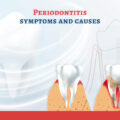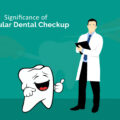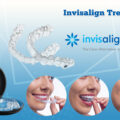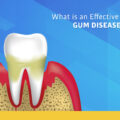
dental care
edental
19 March 2019
How to Manage Your Teen’s Dental Health Habits – Elite Dental Care Tracy
Of all the health issues common to adolescents, dental health has not seemed to receive much attention. Tobacco use, sexually transmitted infections, and type II diabetes can manifest in the mouth, and many of these lesions mimic other illnesses. Typically, a young teen has about 28 off 32 permanent teeth, excluding the last 4 teeth also known by most as wisdom teeth erupt between the ages of 18 and 25.
According to the American Dental Association (ADA) Mouth Healthy site, smoking and tobacco use cause stained teeth, bad breath and a diminished sense of taste. Over time, smoking can hinder your immune system, producing more concerning side-effects that include a reduced ability to recover after surgery. Because of this, smoking is also one of the most significant risk factors associated with gum or periodontal disease, which causes inflammation around the tooth. This irritation can affect the bone and other supporting structures, and its advanced stages can result in tooth loss.
You might not think about it but oral sex is common to sexually active adults of all ages and orientations. This can result in the disease taking hold in the tissues surrounding the contact area, and some infections are more likely to affect the mouth than others. The most common STDs of the mouth are herpes, chlamydia, gonorrhea and syphilis. The main method of transmitting STDs of the mouth is through contact with bodily fluids. In most cases, the presence of oral sores causes fluids from an infected partner’s genitals to enter the body, and a localized infection develops. Diseases can also be transmitted from the mouth of an infected person to the genitals of his or her partner. The only way to prevent yourself from contracting an oral STD is to practice safe sex, including safe oral sex.
Moreover, oral piercings can cause tooth and gum erosion along with inflammation, infections or allergic reactions if surgical stainless steel jewelry isn’t used or if the piercing isn’t properly cared for. Eating disorders, which appear most often during adolescence, can also cause tooth enamel erosion, as well as cavities, sensitive teeth, mouth infections, and dry mouth.
The California Adolescent Health Collaborative (AHC) document, Investing in Adolescent Health: A Social Imperative for California’s Future outlines a wide range of recommendations to improve adolescent oral health in California. These strategies include:
- promoting good oral health practices among teens,
- promoting statewide fluoridation efforts,
- improving youth access to dental care and preventive programs, and
strengthening the capacity of the public sector
Implementing these recommendations as well as improved data sources would provide a dramatically improved climate for California’s adolescents to pursue optimal dental health and how do we do this? While teens tend not to be forward thinkers, you have to describe the long-term consequences that can occur with a failure to brush, including plaque buildup, tooth decay, gum surgery, root canal, tooth loss, and even heart disease in the most extreme cases. But here’s the trick: Focus on the more superficial elements of poor oral care, like stained, ugly teeth and terrible breath. That might get their attention, depending on the age of your teen, you might be able to encourage brushing by either making it fun or making it worth their while. For instance, If they are between 12-16, adding an iPod into the brushing routine can make it less of a task. Maybe if Tim is in his late teens, you can make him brush twice a day, every day, for a week, just for him to have the car out on Saturday night. And then the same for the next week, and the next.
5 Foods that Can Whiten Your Teeth
Last but not the least, you may need to ensure some help from a more objective source meaning your dentist, since, in your teen’s mind, you might be the stupidest (or at least the most annoying) person in the world right now. That could mean some oral-hygiene-related pamphlets left on your kid’s pillow, complete with some threatening pictures of gum disease and rotten teeth. The idea is to get your kid concerned about his/her dental hygiene for them to come to you seeking for solution. This means you can take him for a dental cleaning, which should be happening at least every six months and is even more important if your teen isn’t brushing enough.In this way, your teen will undergo a complete examination to detect and diagnose any unknown dental health concerns.




